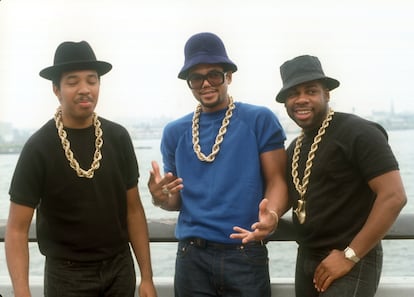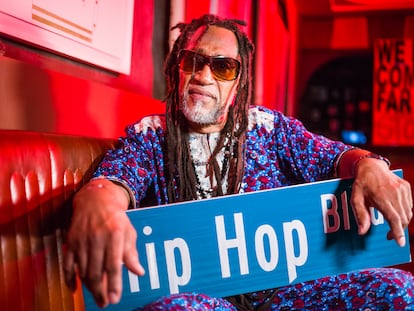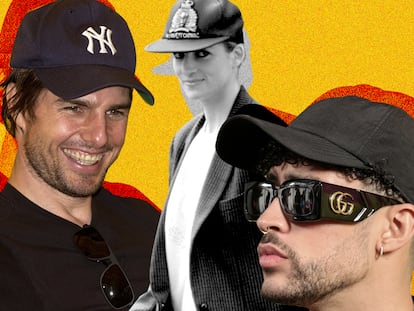The shining symbol of success: how hip hop has influenced the jewelry industry
From its humble beginnings in New York to its current dominance in global pop culture, hip hop has been a standard-bearer of flamboyance

In the world of jewelry, where diamonds and gold symbolize status, power and luxury, hip hop culture has taken the industry to a whole new level. Nicki Minaj, Jay-Z, Pharrell Williams, The Notorious B.I.G., Missy Elliot… these stars of the genre are barely separable from their extravagant, unique, and detailed pieces that form an important part of their personality and their brand image.
The love for jewelry among the most visible faces in hip-hop began in the 1980s, when artists like Public Enemy’s Flava Flav or Run-DMC earned their first dollars outside of their marginalized neighborhoods, dedicating themselves to what they did best. Run-DMC became synonymous with their iconic gold chains, which became an enduring symbol of the group and the hip hop movement in general, as did Flava Flav’s watches.

As the culture progressed, jewelry took on new meaning and became a key element in the conventions of the industry in the 1990s. One of the most obvious reasons is that flashy jewelry is a symbol of success and status. In the marginalized communities from which hip hop emerged, material wealth and financial success were often elusive. In a world where opportunities are often scarce, these pieces represented a monumental achievement, a way to tell the world that, despite all odds, one had succeeded. Expensive, ostentatious jewelry became a visual way of saying, “I have arrived.” This is how The Notorious B.I.G., Tupac and Lil’ Kim’s jewelry created a trend and was widely imitated in the years following their success, giving birth to the bling style and the appearance on the scene of numerous jewelers and jewelry customizers all over the U.S.

In hip hop culture, bling is a currency of exchange. The bigger and shinier the jewelry, the better. This is not just a display of ego; it serves as a constant reminder that, despite the struggles, success is attainable. Bling culture has inspired aspiring artists to push forward, to strive for their dreams and to believe that they can overcome any obstacle. If Lil Uzi Vert can embed a $24 million diamond in his forehead, anything is possible.
Behind every dazzling piece in the hip hop world is a talented jeweler or designer. Jacob & Co, Ben Baller, Eliantte, and Johnny Dang are just a few of the names that have left an indelible mark on the industry. These jewelry artists not only create beautiful pieces but also become creative collaborators, transforming rappers’ visions into glittering masterpieces; something that goes beyond the commercial transaction. It is based on trust, creative collaboration, and mutual respect. Rappers see their jewelers as partners in creating their image and expressing their success, and show their appreciation in a variety of ways, from mentions in song lyrics to personalized gifts. This special relationship is an integral part of hip hop culture and continues to be a source of inspiration and creativity for both sides.

The hip hop world has never been a place for the timid. From its humble beginnings in the neighborhoods of New York to its current dominance in global pop culture, hip hop has been a beacon of bold expression, boundless creativity and, yes, flashy flamboyance. And nothing epitomizes this extravagance more than jewelry. More than diamonds and gold, jewelry in hip hop is a constant reminder that dreams can come true and that the glow of success will never fade. Whether it’s a rapper wearing a flashy gold chain or a jeweler creating it, all are leaving their indelible mark on hip hop’s rich history, creating a significant artistic heritage.
Sign up for our weekly newsletter to get more English-language news coverage from EL PAÍS USA Edition
Tu suscripción se está usando en otro dispositivo
¿Quieres añadir otro usuario a tu suscripción?
Si continúas leyendo en este dispositivo, no se podrá leer en el otro.
FlechaTu suscripción se está usando en otro dispositivo y solo puedes acceder a EL PAÍS desde un dispositivo a la vez.
Si quieres compartir tu cuenta, cambia tu suscripción a la modalidad Premium, así podrás añadir otro usuario. Cada uno accederá con su propia cuenta de email, lo que os permitirá personalizar vuestra experiencia en EL PAÍS.
¿Tienes una suscripción de empresa? Accede aquí para contratar más cuentas.
En el caso de no saber quién está usando tu cuenta, te recomendamos cambiar tu contraseña aquí.
Si decides continuar compartiendo tu cuenta, este mensaje se mostrará en tu dispositivo y en el de la otra persona que está usando tu cuenta de forma indefinida, afectando a tu experiencia de lectura. Puedes consultar aquí los términos y condiciones de la suscripción digital.
More information
Archived In
Últimas noticias
There is as much life left to discover on planet Earth as that which is already known
Dozens presumed dead, around 100 injured in fire at Swiss Alps bar during New Year’s celebration
Is porn for women different from conventional porn? We spoke to those who make it
Cartagena de Indias is sinking: What can the city do to mitigate it?
Most viewed
- Reinhard Genzel, Nobel laureate in physics: ‘One-minute videos will never give you the truth’
- David King, chemist: ‘There are scientists studying how to cool the planet; nobody should stop these experiments from happening’
- Oona Chaplin: ‘I told James Cameron that I was living in a treehouse and starting a permaculture project with a friend’
- Sinaloa Cartel war is taking its toll on Los Chapitos
- The Interoceanic Train, the Mexican alternative to the Panama Canal










































